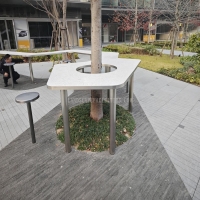Welcome to the website for landscape facilities products and knowledge.
How do synthetic rattan’s surface treatments impact slip resistance?
Synthetic rattan is a popular choice for outdoor furniture due to its durability and aesthetic appeal. However, one critical factor that often goes overlooked is its slip resistance, which is heavily influenced by surface treatments. These treatments, such as textured coatings or UV-resistant finishes, play a pivotal role in enhancing grip and safety, especially in wet or humid conditions.
The surface of synthetic rattan is often engineered with micro-grooves or embossed patterns to increase friction. This design mimics natural rattan’s irregular texture, reducing the risk of slips. Additionally, some manufacturers apply anti-slip coatings, which create a slightly rough surface without compromising comfort. These treatments are particularly beneficial for poolside or patio furniture, where surfaces can become slippery.
UV-resistant treatments also indirectly improve slip resistance by preventing the material from becoming brittle or smooth over time. Without proper UV protection, synthetic rattan may degrade, losing its textured surface and becoming hazardous.
In summary, synthetic rattan’s slip resistance is a result of intentional surface treatments that balance aesthetics, durability, and safety. For consumers, understanding these features ensures smarter purchases for high-traffic or wet environments.
Related search:

Recommendation
An outdoor bar counter with stainless steel and terrazzo materials in an irregular shape